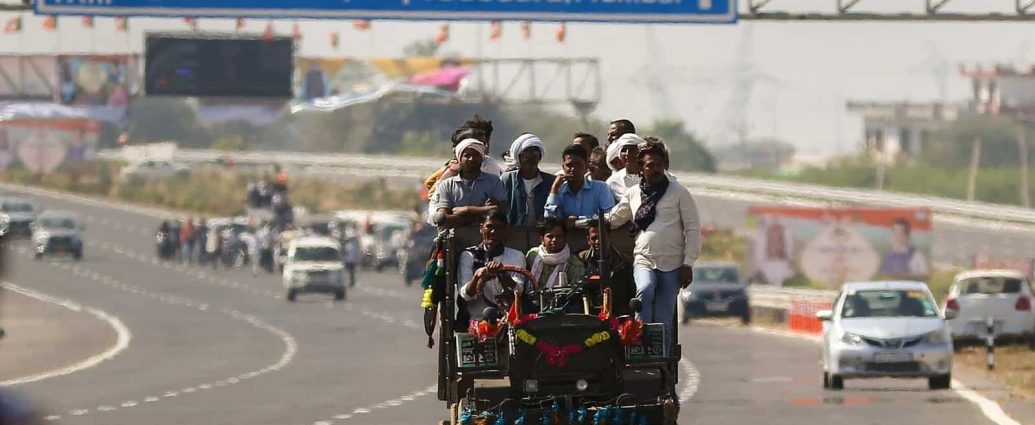India on Sunday inaugurated the first stage of its longest expressway, a route linking New Delhi and Mumbai, as it makes a concerted infrastructure push to catch up with geopolitical rival China.
The ambitious $13 billion project will eventually cut the road travel time between the country’s two biggest cities in half, to 12 hours.
India is the world’s fastest-growing major economy and will soon be recognised as its most populous country, but its infrastructure remains decades behind that of its northern neighbour.
A sign over one of the new four-lane carriageways proclaimed “Welcome to Delhi-Vadodara-Mumbai Expressway” — a route that spans a total of 1,386 kilometres (861 miles).
Prime Minister Narendra Modi opened the 246-kilometre first stage Sunday, linking the capital with the tourist city of Jaipur in Rajasthan.
It was a “sign of developing India”, he said, adding that “such investments in railways, highways, subway lines and airports are a key to pushing the country’s growth rate, attracting more investments and creating fresh jobs”.
Asia’s third-largest economy has made a renewed push to decouple itself from an increasingly assertive China’s supply chains and build up its own economic capacity since a deadly military clash on their Ladakh frontier in 2020.
A wary New Delhi has expedited many key projects, and Modi’s government this month announced an unprecedented 33 percent increase in infrastructure spending.
The Indian premier is expected to open at least a dozen major railways, highways, expressways and port projects in the next few months.
– ‘Geopolitical sweet spot’ –
India has one of the world’s largest rail networks — employing 1.3 million people — but it is badly outdated and needs huge investments in both track and rolling stock, with authorities seeking to tap private capital to do so.
For its part, Beijing has poured hundreds of billions of dollars into infrastructure over many years and China now boasts an extensive motorway system, gleaming airports and by far the world’s largest high-speed rail network.
India’s first high-speed rail line, a $13 billion Japanese-funded project linking Mumbai and Ahmedabad, remains under construction and has been hit by land acquisition and other bureaucratic bottlenecks.
Harsh V. Pant, a professor with King’s College London, told AFP that with China “losing some of its lustre”, Indian policymakers “feel that it is in a geopolitical and geoeconomic sweet spot which needs to be leveraged with higher infrastructure investments to make it an even more lucrative and attractive economy”.
He added: “China’s economic growth and infrastructure development started a few decades before [India’s] so there is still a lot that it needs to do in terms of matching up to China.”
This story has been published from a wire agency feed without modifications to the text. Only the headline has been changed.
